The town of Derinkuyu in Turkey looks like any other from the outside. People move through their daily routines, shopping for groceries, riding scooters along narrow roads, and cleaning their doorsteps without giving much thought to the ground beneath them.
But below the village lies something extraordinary, an entire ancient city tucked beneath homes and buried under basements, carved deep into the earth. It stretches down the equivalent of twenty stories, silent and unseen, shaped by hands from a time long gone.
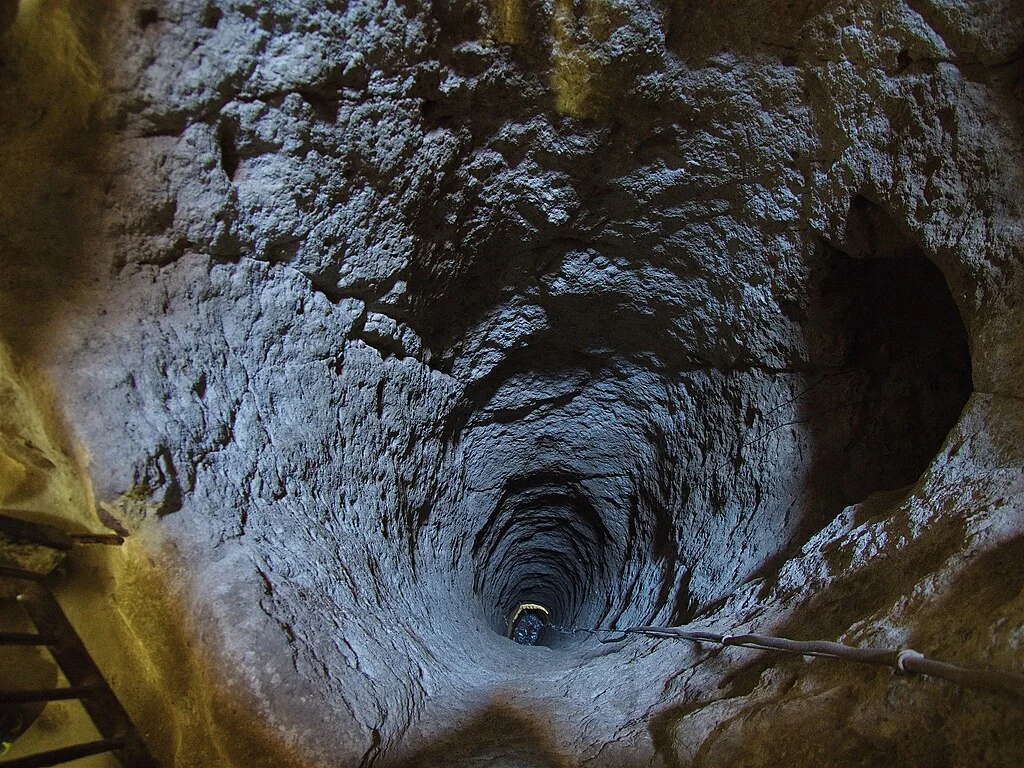
The streets of Derinkuyu appear calm, with homes and shops that seem like any other village. Beneath them, however, lies a hidden space shaped by the hands of people who chose to live where no one could see them.
Each level below reveals more rooms, more corridors, and more quiet purpose. The layout is thoughtful, built with care and understanding. It served as a shelter, a storage place, and a way to remain safe when the world above changed without warning.
Stairs That Keep Going
The entrance looks plain, carved from stone and easy to overlook. A narrow tunnel leads inside, and once you step through, the ground begins to slope downward into dim passageways shaped by careful hands long ago.
The steps continue deeper with no clear end. Some paths open into small round chambers, while others stretch into tight corridors that feel almost too narrow to pass. Just when you expect to stop, another tunnel appears, waiting in silence.
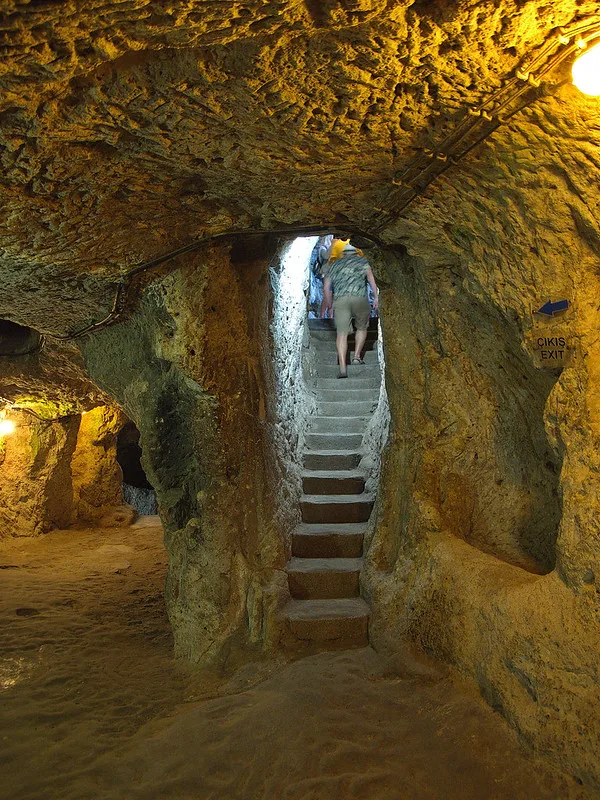
Derinkuyu reaches nearly 280 feet beneath the surface, as deep as an eighteen-story building turned upside down and buried. Every level was shaped by human effort, with no machines to guide the work and no plans left behind.
The air stays clear even in the lowest chambers. Long vertical shafts were carved to let it flow, connecting each space like lungs hidden in stone. Those who built it planned for every detail, including how a person would breathe in the dark.
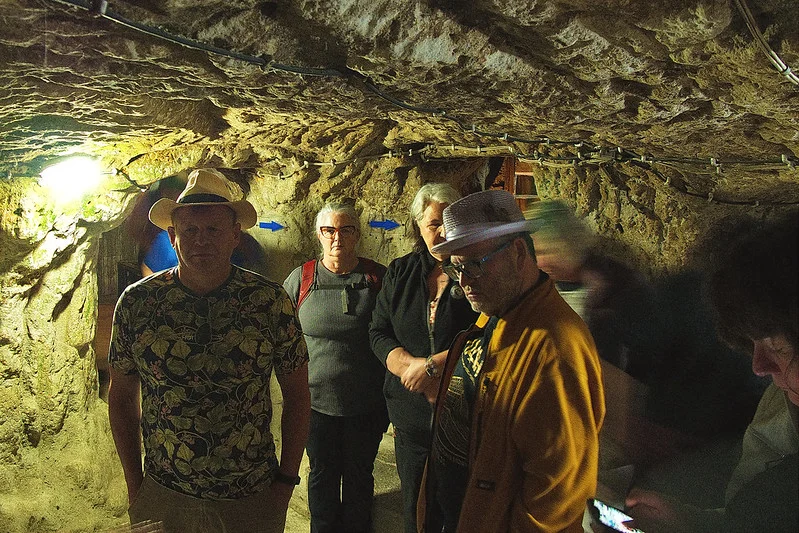
The exact beginning of Derinkuyu remains unclear. Some researchers believe the Phrygians began carving into the soft volcanic rock around 800 BCE. Others point to earlier cultures who may have shaped the first hidden spaces beneath the earth.
Over time, more people arrived and added to what already existed. Early Anatolian communities shaped it further, and later, Byzantine Christians expanded the network. They created living quarters, storage rooms, prayer halls, and passageways, all made to help people stay hidden when they needed to.
A Place to Hide, Not Just to Live
Life in Derinkuyu was shaped by necessity. It became a refuge during uncertain times, holding as many as 20,000 people along with their animals. Families sought protection in its chambers while monks taught theology in underground schools.
Animals moved down ramps into stone stables, and wine aged in carved cellars. Kitchens, chapels, and meeting rooms created a complete community below the surface, mirroring life above while offering safety in the earth’s sheltering depths.
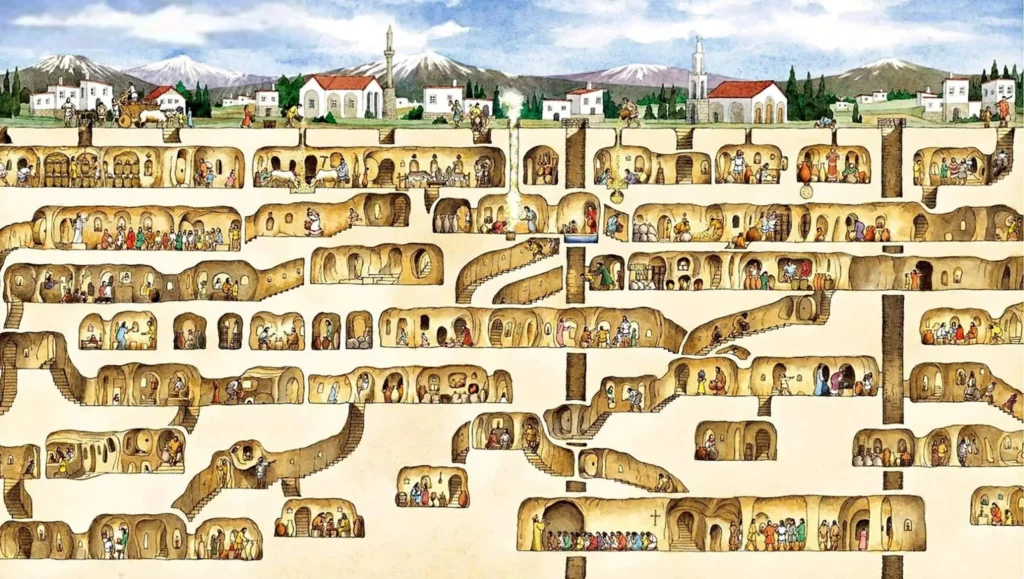
Kitchens sent smoke through hidden chimneys that carried it away from view. Chapels glowed with the light of oil lamps set into stone recesses. Long dining rooms held benches shaped from the same rock that formed the walls.
The most striking feature is the scale. The city stretches farther than you expect, shaped with a level of planning that feels extraordinary. Even while standing inside it, the depth and complexity seem beyond what human hands could achieve.
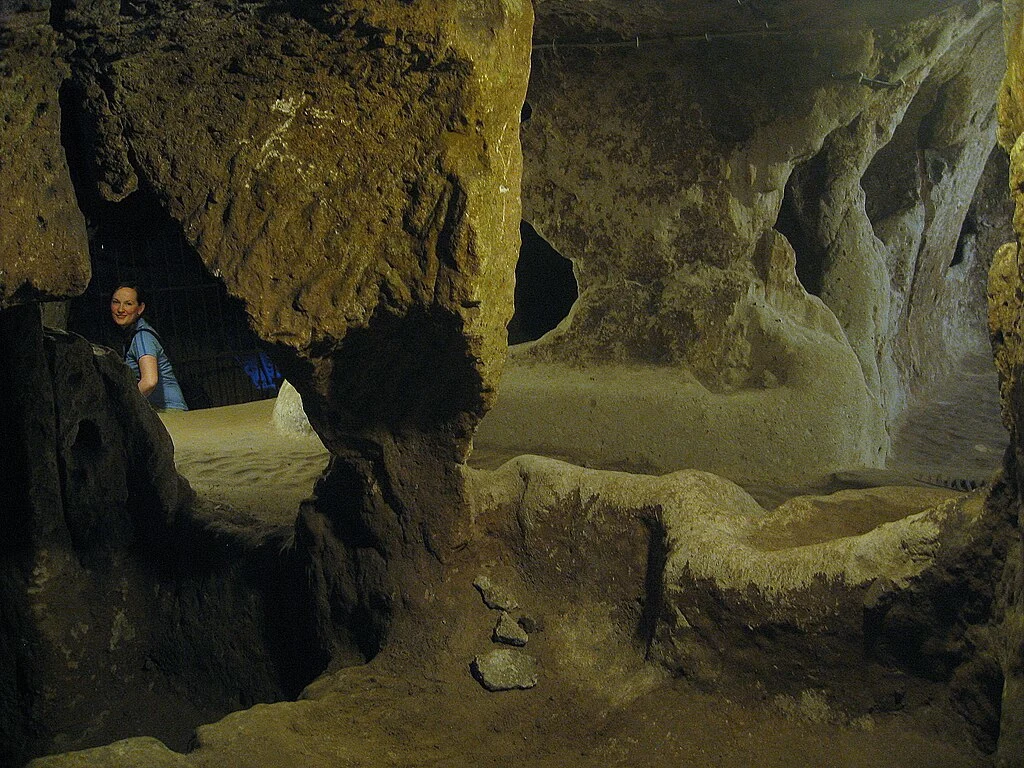
It is easy to picture families gathered in the quiet, their voices low in the flicker of oil lamps. Children huddle near their parents, and animals stand tethered to stone rings carved into the walls.
The air feels heavy with stories. Each curve in the rock seems to hold the memory of lives that passed through, shaping the walls with their presence. It is as if time has pressed them here, leaving their imprint in the stone.
The Doors Were Round and Rolled Shut
One of Derinkuyu’s most remarkable features is its doors. They were not built from wood or metal but carved from volcanic rock into massive circular shapes, each one large enough to seal an entire passage.
These stone discs could be rolled into place from the inside with a simple lever. Once closed, they locked the world out completely, turning the passage behind them into a space of safety and silence.
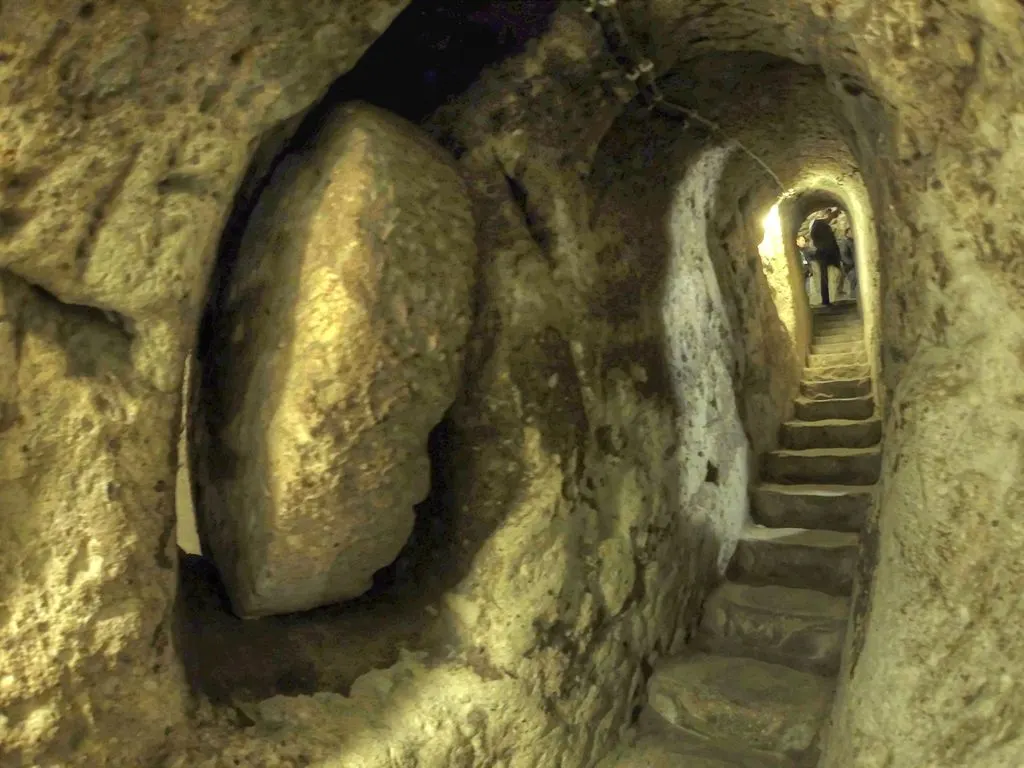
Each doorway offered a single path, entered and exited in the same place. In times of danger, people could retreat into the maze and roll heavy stone doors into place, locking themselves within its winding safety.
Some entry points were concealed inside houses, hidden beyond cellar walls or beneath trapdoors. A soldier moving through the village would see only homes and streets, never realizing that an entire city stretched far below.
The design of Derinkuyu worked as a quiet defense. Those who lived here avoided open confrontation, choosing instead to disappear into the passages. Every doorway, tunnel, and chamber was built to keep them hidden until it was safe to return.
A City That Breathes Rock
Inside Derinkuyu, the walls feel deliberate, not rough. They are smoothed and shaped so that air can flow easily, with curved ceilings even in narrow passages to bear the weight above. Some rooms are formed so precisely that they seem designed for sound to carry in prayer and gathering spaces.

The design shows patience and vision. Stone from the earth became a framework that has endured for centuries. Its balance and structure have kept it standing through time, giving it the qualities of both a home and a carefully built device.
No written guide to its creation has surfaced. There are no known maps or instructions from its makers. Each passage feels like the work of skills handed down in practice rather than on paper, expanded by generations who continued building toward an unseen completion.
Rediscovered by Accident
Derinkuyu remained hidden until 1963, when a man in the village began renovating his home. Breaking through a basement wall, he stepped into a dark tunnel that wound deeper into the ground and opened into a vast, silent network of chambers.
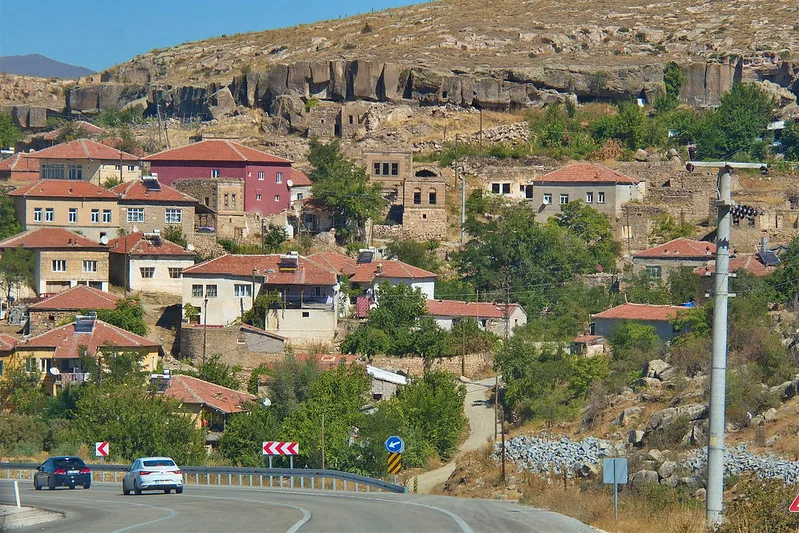
Since that day, parts of the city have been cleared for visitors, while large sections stay closed. Archaeologists believe much still lies buried, with sealed passages and lower levels left untouched. Some say the tunnels may link to other underground cities, a thought that feels possible once you have walked through Derinkuyu.
The People Who Needed It Are Gone
There are no names on the walls, no portraits, and no marks of ownership. The space offers no clear account of who lived here or when. It sits in stillness, unfinished and waiting, as if it was meant to be found without explanation.
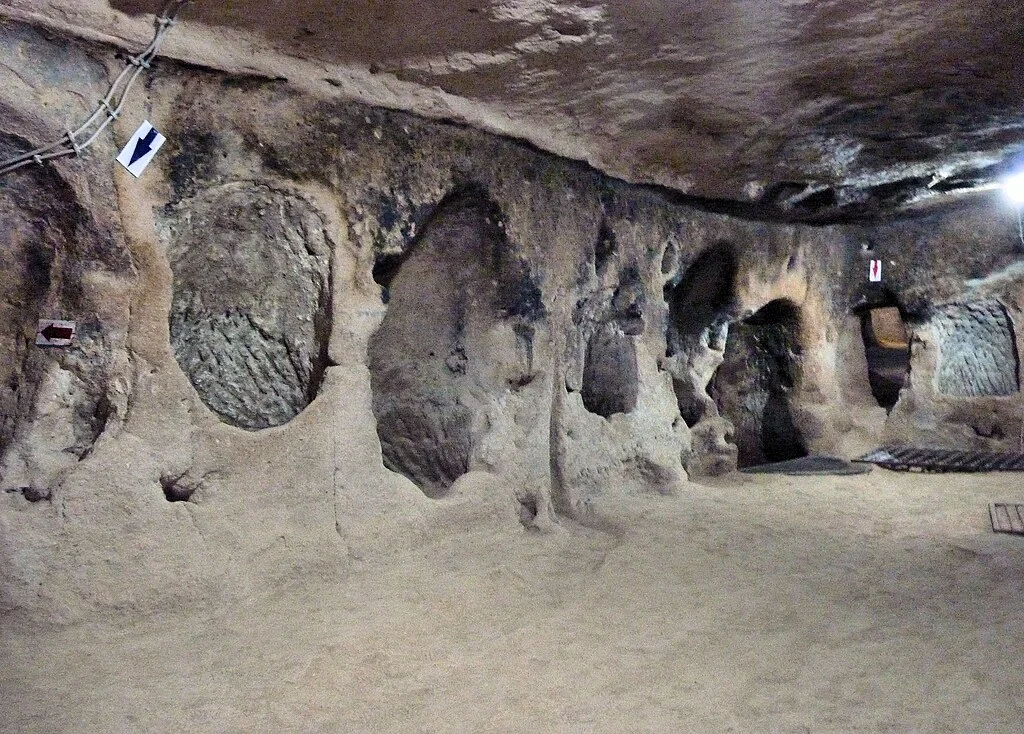
That quiet is part of its force. People built it knowing they might disappear, yet they shaped it with care. They made it strong enough to endure their absence, wide enough for entire communities, and hidden enough to protect what mattered most.

Climbing back to the surface, the light feels sharper. The village appears unchanged, with its streets, shops, and passing buses. Yet the ground carries a different weight once you understand the depth and history beneath your feet.

